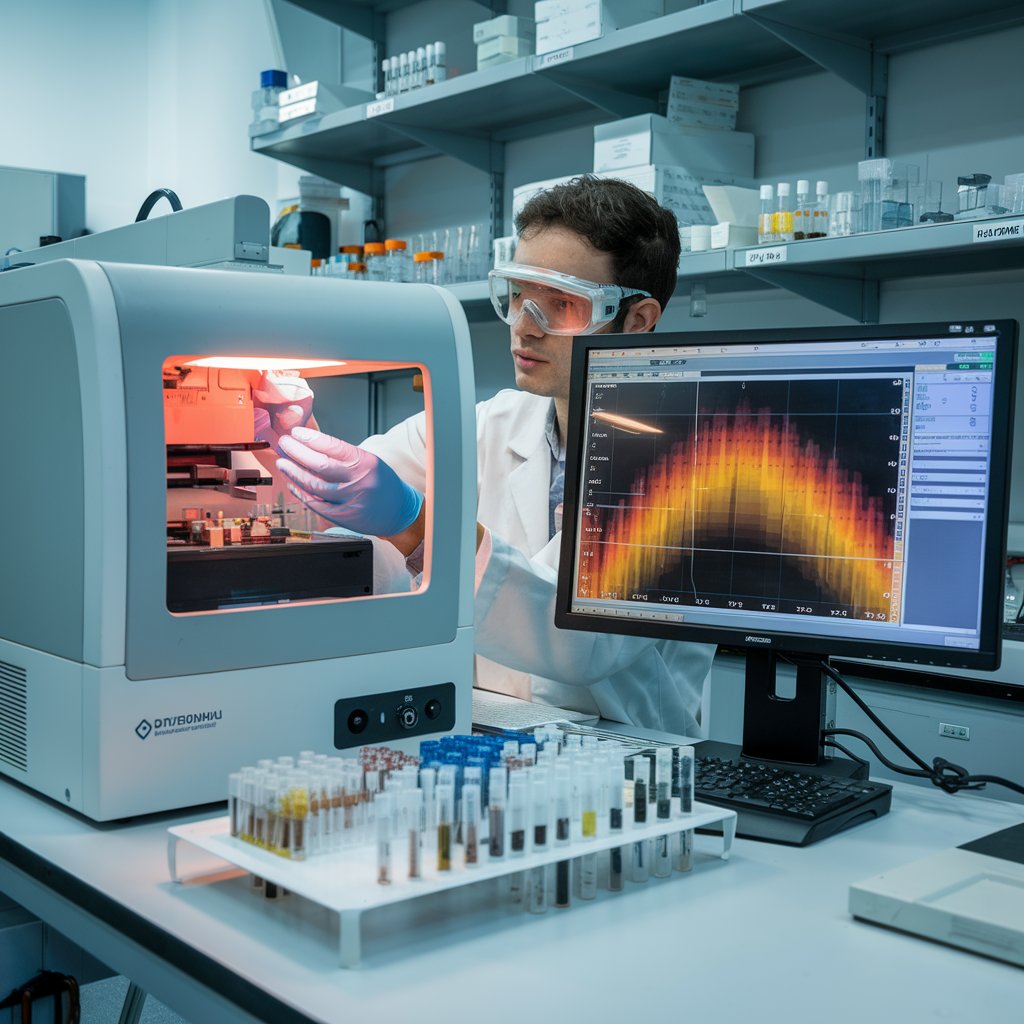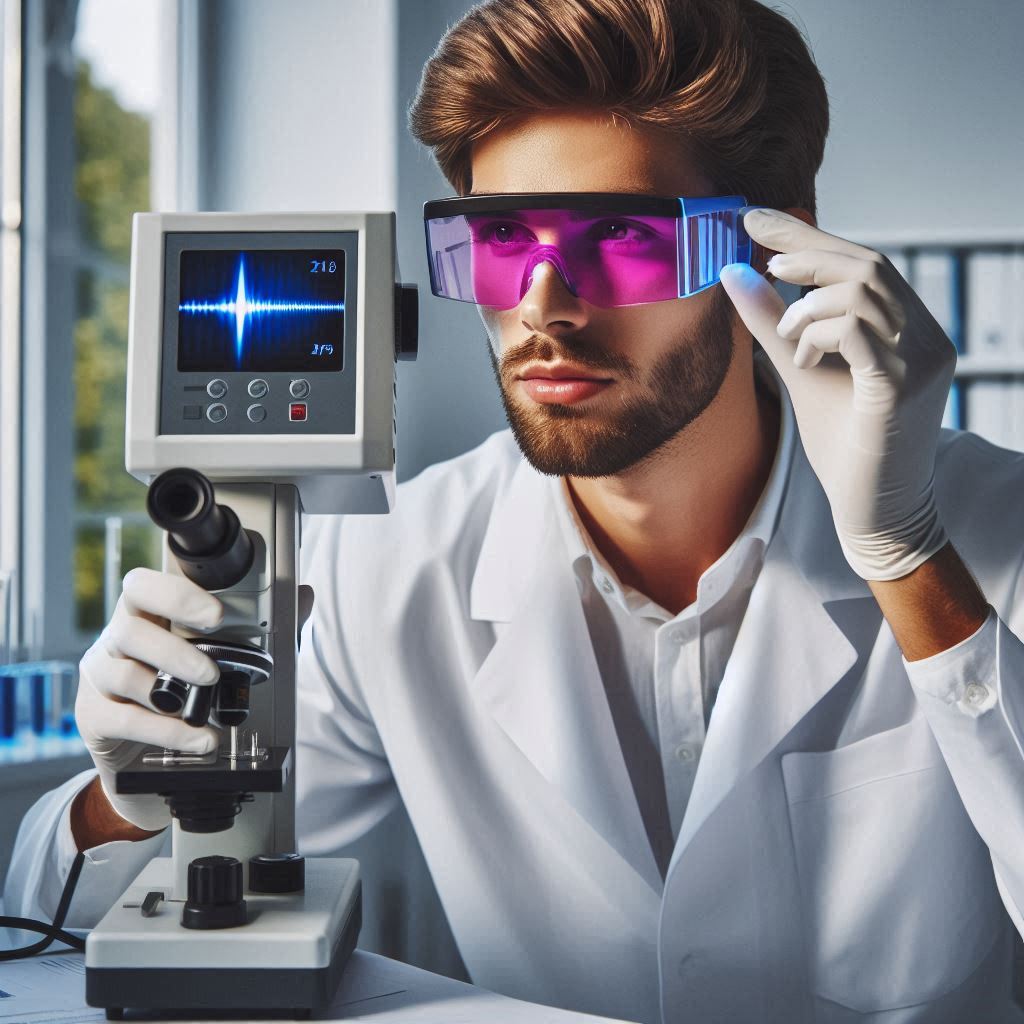Infrared (IR) spectroscopy is a technique that measures the absorption of infrared light by a sample to provide valuable insights into its chemical composition. Over the years, IR spectroscopy has been extensively used in research, industry, and environmental monitoring. However, as industries demand greater efficiency, precision, and real-time capabilities, Artificial Intelligence (AI) has emerged as a transformative force, revolutionizing how IR spectroscopy is performed and applied across various sectors.
What is Infrared (IR) Spectroscopy?
Infrared spectroscopy is based on the principle that different molecules absorb specific wavelengths of infrared light, resulting in unique absorption spectra. This allows scientists to analyze and identify molecular structures, concentration levels, and chemical bonds present in the sample. It’s commonly used in industries like pharmaceuticals, food safety, environmental monitoring, and chemical manufacturing.
Traditionally, IR spectroscopy involved complex and manual data analysis, where scientists or engineers had to interpret spectral data based on their expertise. As the demand for faster results and greater accuracy increased, AI began to play a pivotal role in transforming IR spectroscopy.

AI-Driven Data Interpretation: From Manual to Automated Analysis
One of the most significant advancements AI brings to IR spectroscopy is automated data interpretation. Traditionally, human experts had to manually interpret the results, which were time-consuming and prone to error. With AI algorithms, particularly machine learning (ML) models, IR spectrometers can now analyze large datasets and recognize complex patterns that were previously difficult to detect.
AI models can automatically classify samples, identify chemical compounds, and even predict molecular characteristics. This reduces the need for manual intervention, speeds up the analysis process, and ensures greater consistency and reliability in results.
-
Automated Classification: AI can be used to automatically identify and classify substances based on their spectral data, which significantly reduces analysis time.
-
Real-Time Monitoring: AI systems can process data instantly, enabling continuous monitoring of ongoing processes, especially in industrial settings like chemical plants or pharmaceuticals.
Download PDF Brochure @
https://www.marketsandmarkets.com/pdfdownloadNew.asp?id=42486905
Enhanced Predictive Analytics and Process Control
In industrial environments, the need for real-time monitoring and predictive analysis has been growing rapidly. AI-powered IR spectrometers can predict product quality and detect anomalies in chemical processes, which helps ensure consistent production standards.
For example, in the pharmaceutical industry, AI-enabled IR spectroscopy is used to monitor the consistency of drug formulations, identifying potential variations in active ingredients or contaminants before they become an issue. In chemical manufacturing, predictive analytics driven by AI can help forecast when machinery will need maintenance, reducing unexpected downtime and improving overall process efficiency.
AI’s ability to provide predictive insights ensures better quality control and faster decision-making, allowing industries to make adjustments on the fly to avoid production delays, lower costs, or ensure compliance with regulatory standards.

Accelerating Research and Development in Various Fields
AI is also playing a key role in research and development (R&D) across several sectors. In materials science and pharmaceutical development, AI models can sift through vast amounts of spectral data to identify correlations that may not be immediately apparent. This capability accelerates the discovery of new compounds and materials, helping researchers find optimal chemical formulations faster than ever.
-
Accelerating Drug Development: AI can assist in drug design by predicting how new compounds will behave based on their spectral data, reducing the time spent on experimental trials and enhancing the R&D process.
-
Advanced Material Discovery: In fields like nanotechnology and materials engineering, AI is enabling the discovery of novel materials by analyzing IR spectra and suggesting new combinations or modifications to molecules.
Mobile and Portable IR Spectroscopy: AI in the Field
Traditionally, IR spectroscopy required bulky lab-based instruments. However, recent advances in miniaturization have allowed for portable IR spectrometers that can be used for field analysis. AI technology integrated into these portable devices enables on-site chemical analysis with the same precision as lab instruments.
Applications of mobile AI-powered IR spectroscopy include:
-
Environmental Monitoring: Detecting pollutants or hazardous gases in real-time, which is critical for air quality monitoring, toxic spill detection, and environmental health.
-
Food Safety: Ensuring food quality and detecting contaminants such as pesticides, allergens, or pathogens without the need for laboratory analysis.
-
Agriculture: Analyzing soil conditions, plant health, and moisture content, enabling smarter farming practices.
The ability to perform these analyses directly in the field, without needing extensive lab setups, is driving growth in industries such as agriculture, environmental science, and law enforcement.
Applications of AI-Enhanced IR Spectroscopy
Pharmaceutical Industry
In the pharmaceutical sector, AI-powered IR spectroscopy enhances:
-
Drug Development: AI assists in the identification of active pharmaceutical ingredients (APIs) and excipients, speeding up the development process.
-
Quality Control: Real-time monitoring of drug formulations ensures that each batch meets the required standards, reducing defects and improving patient safety.
Environmental Monitoring
AI has brought substantial improvements in environmental monitoring using IR spectroscopy:
-
Pollutant Detection: AI helps in identifying and quantifying pollutants like greenhouse gases, particulates, and volatile organic compounds (VOCs) in air or water.
-
Real-Time Analysis: Automated, real-time detection of harmful substances allows for quicker responses to environmental hazards.
Food and Agriculture
The integration of AI in IR spectroscopy offers solutions for:
-
Non-destructive Food Testing: Ensuring the safety and quality of food products by detecting contaminants, moisture levels, and other critical parameters without damaging the sample.
-
Agricultural Monitoring: Analyzing soil properties, crop health, and food safety in real-time for smarter farming decisions.
Challenges and Considerations in AI Integration
Despite the benefits, the integration of AI into IR spectroscopy comes with some challenges:
-
Data Quality: For AI algorithms to function optimally, high-quality, well-labeled data is necessary. Poor data can lead to inaccurate predictions and unreliable results.
-
Complexity of Implementation: Integrating AI into existing IR spectroscopy systems can require substantial upfront investment and may be complex for older systems.
-
Interpretability of AI Results: In regulated industries such as pharmaceuticals, ensuring that AI-based decisions are interpretable and auditable is a challenge, particularly when these decisions impact patient safety or regulatory compliance.
Future Outlook: The Next Phase of AI in IR Spectroscopy
The future of AI in IR spectroscopy is bright, with continued advancements expected in areas like edge computing, cloud-based analytics, and autonomous analysis. As AI algorithms become more sophisticated, predictive capabilities will expand, enabling even greater insights into material behavior and process dynamics.
AI is likely to become the standard in high-precision IR spectroscopy across all industries, pushing the boundaries of what’s possible in chemical analysis. As AI evolves, real-time, on-the-go analysis will become more accessible, making IR spectroscopy an even more powerful tool for a wider range of applications.
The integration of AI in IR spectroscopy is driving the industry toward faster, more accurate, and more efficient analysis. From automated data interpretation to predictive analytics and mobile applications, AI is enhancing the capabilities of IR spectroscopy across a wide range of industries. As AI technology continues to evolve, we can expect even more innovative and transformative applications, further cementing its role in revolutionizing the field of spectroscopy.
